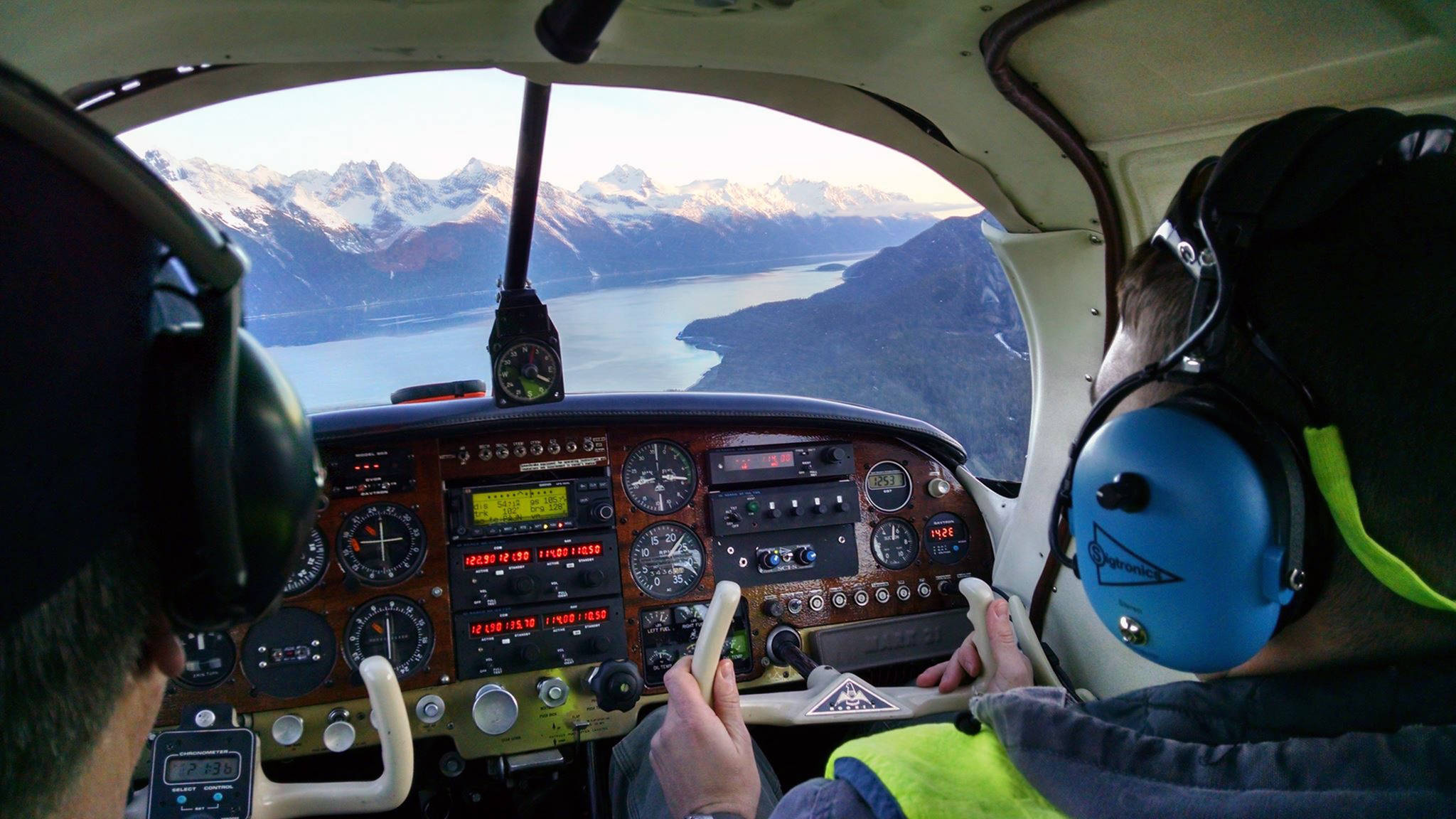Correction: An earlier version of this article misspelled Beth Weldon’s surname. It’s Weldon, not Waldon.
Civil Air Patrol Commander David Hydock has been flying for 40 years, but fundraising hasn’t been part of the job until just a few months ago.
The Alaska Wing Civil Air Patrol Southeast squadron is trying to find $10,000 after state funding for the program decreased this year due to budget cuts. That money is used for expenses with their hangar near Juneau International Airport where they store planes and train cadets.
Hydock attended the recent City and Borough of Juneau Assembly meeting to accept recognition from Mayor Beth Weldon for Civil Air Patrol week, which is Dec. 1-8 to honor the 77th anniversary of the official Air Force auxiliary. At the meeting, Hydock mentioned the need for finding alternate sources of revenue for the patrol.
“We’re able to make up about $2,000 on our own through dues,” Hydock said, but added they are still seeking $6,000-8,000 to make up for the lost funding needed to pay the bills.
The Alaska Wing Civil Air Patrol in 2017 received $453,500 in total from the State of Alaska, which was used to support all 14 of the squadrons. This year, the funding was cut to $302,300 overall for the state, with a special note in the state budget that the patrol should actively search for non-state funding to support its operations.
“Hopefully we can get some kind of grant,” Hydock said. He added they will also likely solicit personal donations.
[ ‘Cream of the crop’: Three federal employees in Juneau recognized for outstanding work]
Hydock on Monday highlighted the importance of cadet training, citing the lack of pilots across the nation, both in the military and commercial sectors. In fiscal year 2017, the U.S. Air Force was short 1,005 fighter pilot positions, according to a report from the U.S. Government Accountability Office. The Air Force forecasts that this gap will persist over time, even as they take steps to train more pilots and improve retention, highlighting a need for assistance from programs such as the Civil Air Patrol cadet training.
The Civil Air Patrol is 16-step cadet program for youth aged 12 to 21 includes aerospace education, leadership training, physical fitness and moral leadership and allows those who earn cadet officer status to enter the Air Force as an E3 (airman first class) rather than an E1 (airman basic).
The Southeast patrol has 30 cadets in their program, three of whom are currently training to fly, Hydock said. The cadets in the Southeast are located in Juneau, Sitka, Hoonah and Haines. In addition to the cadets, there are 40 senior members of the patrol, most of whom are located in Juneau.
Cadets typically join the military or start flying privately after the program, said Hydock.
“We’re kind of like Boy Scouts, but we have airplanes; we’re cooler,” said Hydock.
Hydock hopes to certify five pilots this year, a number that hasn’t been reached in 18 years.
“I’ve made it a mission critical item that we start making pilots,” he noted.
Victoria Austin, 17, is one of the cadets learning to fly in the program. She joined the Civil Air Patrol almost two years ago. Living in a remote area just outside of Hoonah, she knows just how important search and rescue can be.
“I wanted to be valuable and help,” said Austin. “Because I’m a kid that’s kind of hard to do, but Civil Air Patrol gives me the opportunity. You’re flying for a purpose.”
The most challenging thing for Austin was when she first started out. Being so far removed from the rest of the patrol, she had to learn to be able to function and do things by herself as the only way she could attend meetings was if a senior member could fly to pick her up from Juneau. Earlier this year she was one of two cadets from Alaska that went to the aviation grounds school in Tennessee.
“Being on my own there was tough,” she said. “But that experience improved me and now I’m able to handle things on my own.”
She said she’s been applying for military academies, and hopes to join the Air Force Academy next year. She also plans to receive her pilot’s license at the end of the school year in 2019.
The Civil Air Patrol was founded during World War II after Gill Robb Wilson, a World War I aviator, wanted to mobilize the nation’s civilian aviators for national defense. Since then, the Civil Air Patrol has helped the nation in various times of need, including aiding in emergency services such as hurricane relief and oil spills.
The Civil Air Patrol can provide less expensive assistance than the Coast Guard or other agencies, said Hydock. The Southeast patrol meets every Saturday to do some type of mission. Usually the Civil Air Patrol helps other people. But now they need help of their own.
“When I get to fly, I’m with a team of people,” Austin said. “There’s camaraderie. You get to help people. And that’s what I want to do.”
Want to help?
If you wish to donate to the Southeast Alaska Wing Civil Air Patrol, you can mail a check to PO Box 33503, Juneau AK 99803.
• Contact reporter Mollie Barnes at 523-2228 or mbarnes@juneauempire.com.

